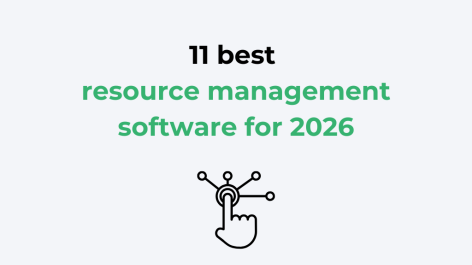The IT sector has renewed its focus on innovation. According to Deloitte, it's poised for growth in 2024. Yet, with rising layoffs, distributed working, and siloed systems managing resources can be tough. Best practice IT resource management is essential to overcome these challenges and help your company return to growth.
To get an inside view from an IT resource manager on the ground, we spoke to Julie Carratu, a seasoned Resource Manager at Capita. Let’s get into it.
But first, let’s quickly introduce you to our expert…
Meet the expert
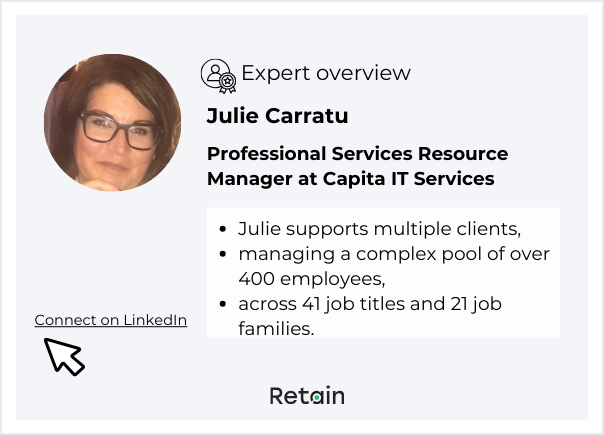
Quick overview: Julie supports multiple clients, managing a complex pool of over 400 employees across 41 job titles and 21 job families. Julie's insights highlight the importance of effective resource management for governance, cost control, and utilisation tracking.
What is it like working in IT resource management in 2024?
“There is never a dull moment” says Julie, “whether businesses are growing or reducing headcount, resource management is a valuable service.”
“If you implement resource management strategies correctly, you will reap the benefits of governance and control across your entire organisation.”
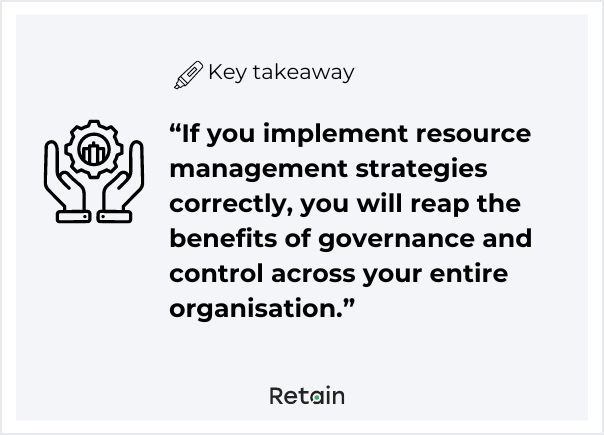
This is made possible because the right approach enables you to control costs and track utilisation from a single system with the importance of understanding pipeline, skills and availability in an instant.
This is key because within IT there are many moving parts and things can move fast. But with a real-time view of resource utilisation, capacity, and budget, you are firmly in control
As Julie points out; “This enables Senior Leadership teams to make instant priority calls knowing the impact of the decisions they are making.”
So, if this is the end result, how do we get there? Here are Julie’s expert tips and proven approaches to master IT resource management:
1. Accurate and automated resource allocation and scheduling
Accurate and automated resource scheduling is the backbone of effective IT resource management. Julie emphasises the critical role of collaboration with clients and programme teams. Dashboards that cover escalations, inflight deliveries, and sales pipelines with a clear resource profile are vital:
“The key to accurate resource allocation is collaboration with your clients and programme teams, with clear dashboards covering escalations, inflight deliveries, and an accurate sales pipeline with a clear resource profile and outcome of the delivery that will be achieved.”
But it’s not just about having one clear view of resource management in a single dashboard. Integration with HCM tools is crucial for automating schedules. This includes tracking holidays, long-term sickness, and new starters.
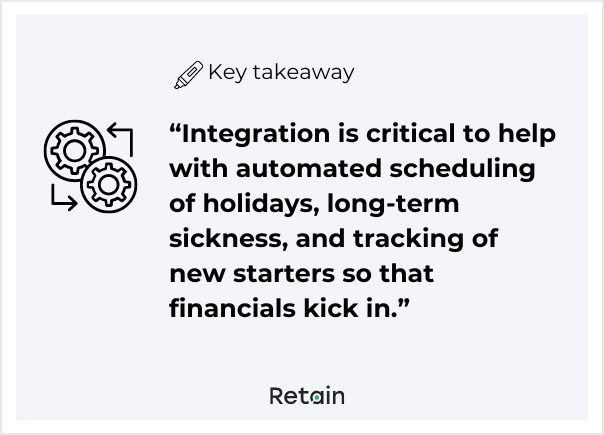
As Julie says, automating these aspects ensures that financials are in sync and resources are allocated efficiently; “Integration with HCM tools is critical to help with automated scheduling of holidays, long-term sickness, and tracking of new starters so that financials kick in.”
Automated scheduling also reduces administrative burdens, freeing up time for more strategic tasks. It ensures that the right resources are available at the right time, improving overall project efficiency and reducing downtime.
Julie also recommends implementing workflows to help with communication and updates of assigned people to projects.
Side note, this is something that’s incredibly easy to do with Retain. Every time a resource is edited, an alert is automatically sent to the resource too.
2. Align skills, expertise, and interests
One of the trickiest yet most valuable aspects of resource management is aligning skills, expertise, and interests. Julie highlights the importance of knowing your people—their career aspirations and training needs; “The tricky part of resource management, but by far the most important value add, is knowing your people, their career aspirations, and their training.”
As Julie points out, when new work comes in, you need to be ahead of the game, knowing who is certified in new technologies and ready to take on new challenges:
“This way, when new work comes in to allocate, you not only use a skills matrix/search but are ahead of the game by knowing who is certified in new technologies, enabling you to put the right person with the right skills in place at the right time.”
This is where the resource managers' skills really come into their own. Julie says; “This takes an understanding of the markets, and a keen ear to know what is going on across your pool of expertise and the forward schedule of known planned training.”
Aligning skills and interests also boosts employee satisfaction, talent management, and retention. When people are placed in roles that match their aspirations and expertise, they are more likely to be motivated and perform at their best.
3. Improve capacity planning and utilisation
Capacity planning is a critical skill in IT resource management. It involves determining the number of resources required to meet future project needs. This process helps bridge the gap between available resources and required ones.
Julie explains that accurate capacity planning starts with understanding what individuals are working on and forward planning for weighted demand. This takes time but yields significant benefits. Over time, you can see a more accurate view of utilisation and identify upcoming gaps in availability.
But, as Julie says; “Capacity planning is a skill especially when you have no crystal ball.”
To simplify capacity planning, Julie recommends streamlining your job family structure and standardising job roles. This makes it easier to put people into the right teams and manage resources effectively.
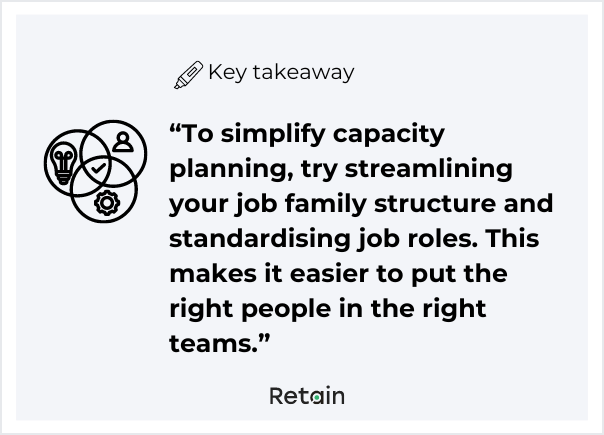
When last-minute requests arise, and no permanent members are available, recruiting contractors or fixed-term employees might be necessary. While this increases costs, it's a viable option to meet urgent demands and keep clients satisfied.
To add to this, Julie says in some business areas, there is a decision point to make around raising requests for additional capacity across your pool based on the probability of winning business;
“Then if work is approved, you have someone ready to mobilise to keep your clients happy. This lends itself well to bid\growth work. Having more work than people is a great position to be in as there is always a solution around growing your capacity of staff.”
In essence, effective capacity planning ensures that you have the right resources available when needed, avoiding overutilisation and burnout. It also enables better decision-making around resource allocation and project prioritisation.
4. Regular resource forecasting and audits
“Governing resource management from an operational perspective takes discipline and passion to keep ahead of the game and be proactive,” says Julie.
Regular resource forecasting and audits are essential for maintaining a proactive approach to resource management. Julie conducts regular review calls across all capabilities in her professional services pool. These calls cover current status, approved new demand, weighted demand, staff wellbeing, upcoming planned leave such as maternity leave, long term sick and training schedules.
Julie says it best: “You must be the face of Resource Management. It’s not just a process to follow.”
“You should be empowered to make the right decisions on the ground knowing what your business priorities are, so you keep everything in line when priorities are made.”
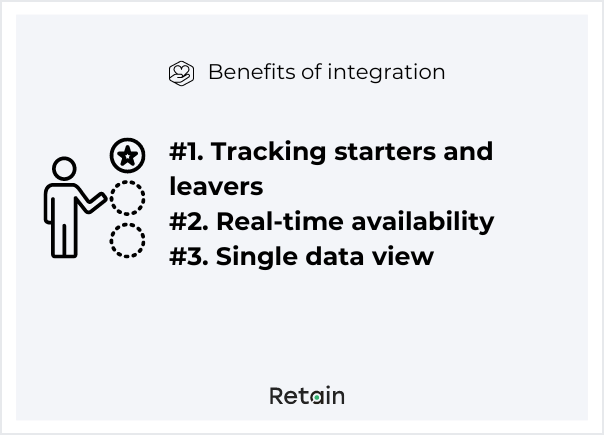
This allows teams to deliver quality work on time and within the set budget. You have a motivated team who aren’t burning out due to over-utilisation.
As Julie says; “Your people are your best asset in a business, and we must use people in the right way.”
Another key point Julie raised is that resource forecasting should be integrated into business planning. Julie already has forecasts for 2025 in the system to help with long-term planning. This forward-thinking approach allows businesses to anticipate resource needs and make informed decisions.
Audits help ensure that the resource management process remains efficient and aligned with business goals. They also identify areas for improvement and help in optimising resource utilisation.
Wrap up: Setting the stage for growth
As you can see, effective IT resource management sets the stage for growth. As Julie advises, implementing resource management correctly with the right tools and processes, and having an effective resource manager, can significantly improve visibility of workload, prevent overutilisation, and maximise efficiency.
Centralising resource planning in a tool like Retain offers several advantages:
🟢One-stop-shop: Clear engagement for everyone to know where to go for resourcing and who to talk to.
🟢Accurate skills database: Standardised and automated resumes/profiles for all employees for easy talent management.
🟢Visibility of reporting: Powerful insights into utilisation, capacity, and demand vs supply.
🟢Priority projects: Informed decisions on resource allocation to avoid unnecessary escalations.
🟢Revenue opportunities: Sharing bench/spare resources to unlock additional revenue.
🟢Innovation in resource management systems: Continuous improvement in user experience, automation, reporting, and ease of use.
Remember, effective resource management ensures that your team is motivated, well-utilised, and ready to embrace growth opportunities. By adopting these proven approaches and expert tips, you can overcome the challenges of IT resource management and drive your business towards success.
If you’d like to find out more about how Retain could be your one-stop-shop for all your resource management needs, we’d love to invite you to book a demo.


